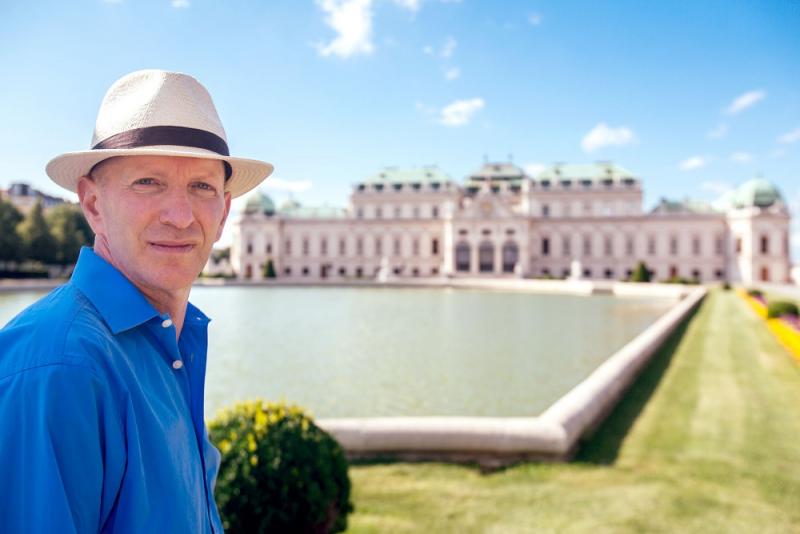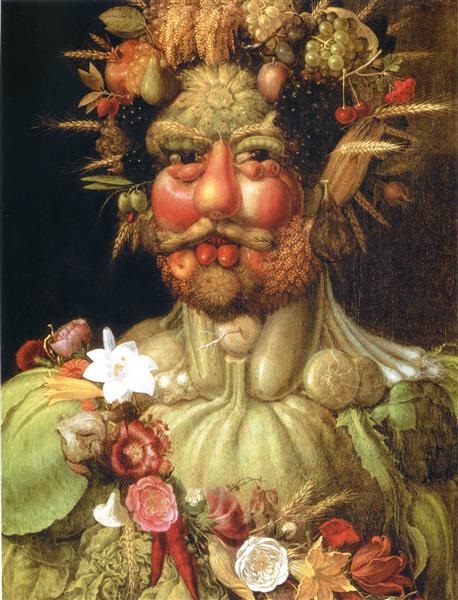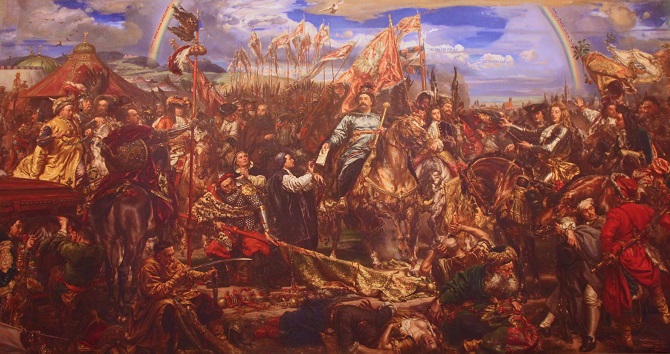Vienna: Empire, Dynasty and Dream, BBC Four | reviews, news & interviews
Vienna: Empire, Dynasty and Dream, BBC Four
Vienna: Empire, Dynasty and Dream, BBC Four
Simon Sebag Montefiore hones in on the Hapsburgs and their capital

Ebullient, prolific, loquacious and a charmingly enthusiastic historian both in print and for television, Simon Sebag Montefiore has turned his attention to the pivotal city of Vienna, nourished equally by the Danube and its central geographical position in Europe.
Images, both interior and exterior, were punctuated by our intrepid explorer-historian, characteristically garbed in bright blue shirt, giving scale to street and landscape, and easily picked out by his trademark jaunty straw hat as he walked through imperial Vienna. It was history experienced on foot, matching intellectual and physical stamina, and sometimes exhausting just to watch.
An unusual number were obese, able perhaps to sit on a sturdy horse but not much else
The introduction with its views of the Danube – Europe’s most majestic river – was studded with names, from Suleiman the Magnificent to Napoleon, the great external military threats, through to cultural luminaries including Mozart, Beethoven, Strauss and Mahler. It was, we were told, an empire of the mind, and some of its monstrous ideas would kill millions: Hitler will follow in the third and final episode. For now, Vienna was the centre of gravity for what was in effect a history not only of the city but of the Habsburgs themselves, at least the Austrian branch (which of course intermarried with the Spanish side).
In medieval times it seemed one Rudolf von Habsburg nominated himself as the first archduke in a document that was eventually revealed as a master forgery; his great competitors were the rulers of Bohemia, and Prague Vienna’s rival. His cryptic AEIOU, seen everywhere from St Stephen’s Cathedral to other sites in the nascent empire, stood loosely for “The Whole World is dominated by Austria”, seemingly then an idle boast, but with the Habsburgs duly doubling as the Holy Roman Emperors, that domination would last for half a millennium.
 Facts and dates were narrated in bewildering profusion – plea to the BBC: some subtitles for unfamiliar spellings and names to help insular Anglophones, and a family tree would also have been welcome. We were caught in a maze of Rudolfs, Ferdinands, Fredericks, Leopolds, Maximilians and Charles, to name but a few – an unusual number were obese, able perhaps to sit on a sturdy horse but not much else. They could sometimes be innovators, however: Maximilian exploited the wonders of the printing press to disseminate images praising the Habsburgs and the wonders of their court.
Facts and dates were narrated in bewildering profusion – plea to the BBC: some subtitles for unfamiliar spellings and names to help insular Anglophones, and a family tree would also have been welcome. We were caught in a maze of Rudolfs, Ferdinands, Fredericks, Leopolds, Maximilians and Charles, to name but a few – an unusual number were obese, able perhaps to sit on a sturdy horse but not much else. They could sometimes be innovators, however: Maximilian exploited the wonders of the printing press to disseminate images praising the Habsburgs and the wonders of their court.
Anti-Semitism was endemic. The early pogrom of 1421 was a terrifying episode of savagery: the Jewish community, bankers to the Habsburgs – template for an uneasy relationship – were lynched and murdered, with a particularly dreadful episode when survivors, sheltering in the synagogue, committed mass suicide by burning their temple down. A joyful contemporaneous plaque commemorating that wonderful event by celebrating Christian merchants is still in situ on Judenplatz, which is also home to Rachel Whiteread’s emotive Holocaust Memorial.
Rudolf II was a great art collector, his favourite artist the painter Arcimboldo, whose portrait of the Emperor as Vertumnus, the Roman God of plant life (pictured above), was made up of fruit (our Simon could not resist fruit salad, duly leading into fruit cake). Leopold’s court contained alchemists, magicians, cabbalists, necromancers, mystics; he loved boys and girls, and littered his kingdom with his bastards. His tame tiger roamed the palace occasionally munching on a courtier. Unusually, he was religiously broadminded, officially tolerating the Protestants of Bohemia. All such reform was overturned by his successor, Ferdinand II, and the Thirty Years War loomed – estimates of casualties range between three and 12 million. The Jesuits were recruited as God’s warriors, and the Counter Reformation was in full swing.
 Startling inbreeding was a major factor fostering both physical deformity and mental unbalance, so the dynasty came to include murderous psychopaths. Leopold I ruled for 50 years, in spite of the fact that his jaw was so huge he was known as the “Hogmouth of Habsburg”. His first wife was his niece, the Spanish Infanta Margarita Teresa; they were betrothed when she was three (several Velazquez in Vienna’s art museum show her at various young ages). Married at 15, she called her husband “uncle” – which he was. Her consort quite liked ostentatious celebrations; we were shown contemporary images of his four-hour equestrian ballets.
Startling inbreeding was a major factor fostering both physical deformity and mental unbalance, so the dynasty came to include murderous psychopaths. Leopold I ruled for 50 years, in spite of the fact that his jaw was so huge he was known as the “Hogmouth of Habsburg”. His first wife was his niece, the Spanish Infanta Margarita Teresa; they were betrothed when she was three (several Velazquez in Vienna’s art museum show her at various young ages). Married at 15, she called her husband “uncle” – which he was. Her consort quite liked ostentatious celebrations; we were shown contemporary images of his four-hour equestrian ballets.
This first episode ended with a fitting and resonant climax: the siege of Vienna by the Ottoman Turks in 1683. Leopold had fled, but a central European coalition – Poles, Bavarians and Saxons – led by Jan Sobieski, the King of Poland, saved the day: its cavalry, 18,000 strong, charged out of the Vienna Woods and brutally annihilated the Turks, even beheading their leader’s favourite concubine and ostrich together as a souvenir of victory (the Vizier had pleaded to spare those). It was Sobieski, rather than Leopold, who was known as the saviour of Europe. (Pictured above: Jan Matejko's Jan III Sobieski Sending a Message of Victory at Vienna to the Pope, Vatican Museums)
The mostly distasteful characteristics of the Habsburgs themselves – they were bloodthirsty, treacherous, avaricious, cowardly and often just plain mad – meant their most extraordinary attribute was their survival for their first four centuries as a ruling dynasty. They served themselves well, but not necessarily the lands over which they ruled. A glimpse of the subterranean cluster of the myriad Habsburg tombs, ornate and festooned with skulls, expressed it well. And we didn’t even get to visit that other collection, the urns that contain their hearts.
Confused? The BBC's partners, the Open University offers a helping hand with an invaluable site that lets the viewer link to interactive maps, timelines and the like.
Add comment
The future of Arts Journalism
You can stop theartsdesk.com closing!
We urgently need financing to survive. Our fundraising drive has thus far raised £49,000 but we need to reach £100,000 or we will be forced to close. Please contribute here: https://gofund.me/c3f6033d
And if you can forward this information to anyone who might assist, we’d be grateful.

Subscribe to theartsdesk.com
Thank you for continuing to read our work on theartsdesk.com. For unlimited access to every article in its entirety, including our archive of more than 15,000 pieces, we're asking for £5 per month or £40 per year. We feel it's a very good deal, and hope you do too.
To take a subscription now simply click here.
And if you're looking for that extra gift for a friend or family member, why not treat them to a theartsdesk.com gift subscription?
more TV
 Black Rabbit, Netflix review - grime and punishment in New York City
Jude Law and Jason Bateman tread the thin line between love and hate
Black Rabbit, Netflix review - grime and punishment in New York City
Jude Law and Jason Bateman tread the thin line between love and hate
 The Hack, ITV review - plodding anatomy of twin UK scandals
Jack Thorne's skill can't disguise the bagginess of his double-headed material
The Hack, ITV review - plodding anatomy of twin UK scandals
Jack Thorne's skill can't disguise the bagginess of his double-headed material
 Slow Horses, Series 5, Apple TV+ review - terror, trauma and impeccable comic timing
Jackson Lamb's band of MI5 misfits continues to fascinate and amuse
Slow Horses, Series 5, Apple TV+ review - terror, trauma and impeccable comic timing
Jackson Lamb's band of MI5 misfits continues to fascinate and amuse
 Coldwater, ITV1 review - horror and black comedy in the Highlands
Superb cast lights up David Ireland's cunning thriller
Coldwater, ITV1 review - horror and black comedy in the Highlands
Superb cast lights up David Ireland's cunning thriller
 Blu-ray: The Sweeney - Series One
Influential and entertaining 1970s police drama, handsomely restored
Blu-ray: The Sweeney - Series One
Influential and entertaining 1970s police drama, handsomely restored
 I Fought the Law, ITVX review - how an 800-year-old law was challenged and changed
Sheridan Smith's raw performance dominates ITV's new docudrama about injustice
I Fought the Law, ITVX review - how an 800-year-old law was challenged and changed
Sheridan Smith's raw performance dominates ITV's new docudrama about injustice
 The Paper, Sky Max review - a spinoff of the US Office worth waiting 20 years for
Perfectly judged recycling of the original's key elements, with a star turn at its heart
The Paper, Sky Max review - a spinoff of the US Office worth waiting 20 years for
Perfectly judged recycling of the original's key elements, with a star turn at its heart
 The Guest, BBC One review - be careful what you wish for
A terrific Eve Myles stars in addictive Welsh mystery
The Guest, BBC One review - be careful what you wish for
A terrific Eve Myles stars in addictive Welsh mystery
 theartsdesk Q&A: Suranne Jones on 'Hostage', power pants and politics
The star and producer talks about taking on the role of Prime Minister, wearing high heels and living in the public eye
theartsdesk Q&A: Suranne Jones on 'Hostage', power pants and politics
The star and producer talks about taking on the role of Prime Minister, wearing high heels and living in the public eye
 King & Conqueror, BBC One review - not many kicks in 1066
Turgid medieval drama leaves viewers in the dark
King & Conqueror, BBC One review - not many kicks in 1066
Turgid medieval drama leaves viewers in the dark
 Hostage, Netflix review - entente not-too-cordiale
Suranne Jones and Julie Delpy cross swords in confused political drama
Hostage, Netflix review - entente not-too-cordiale
Suranne Jones and Julie Delpy cross swords in confused political drama
 In Flight, Channel 4 review - drugs, thugs and Bulgarian gangsters
Katherine Kelly's flight attendant is battling a sea of troubles
In Flight, Channel 4 review - drugs, thugs and Bulgarian gangsters
Katherine Kelly's flight attendant is battling a sea of troubles

Comments
SSM's constant tone of